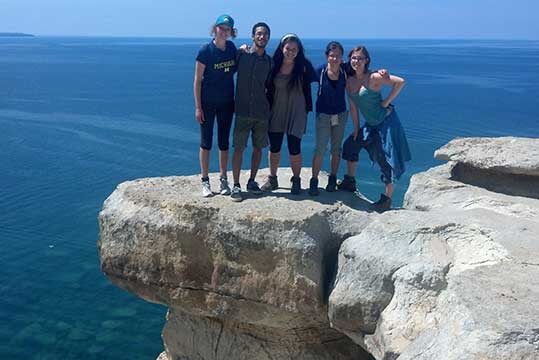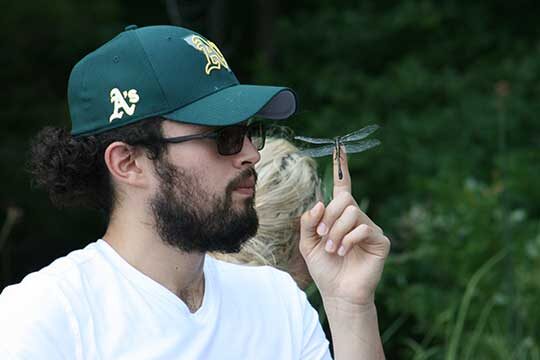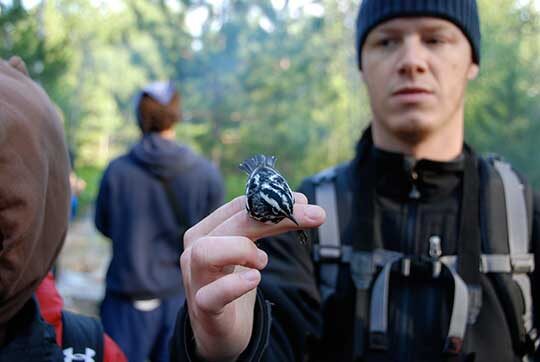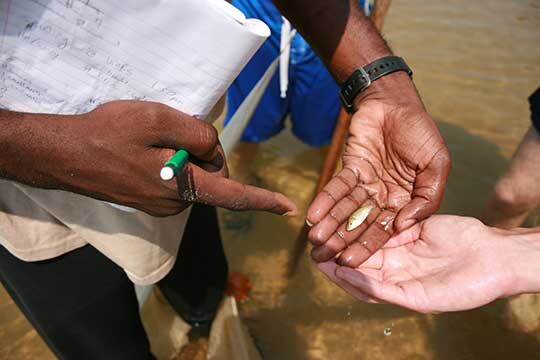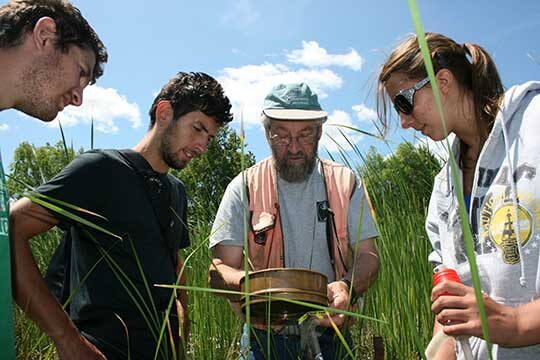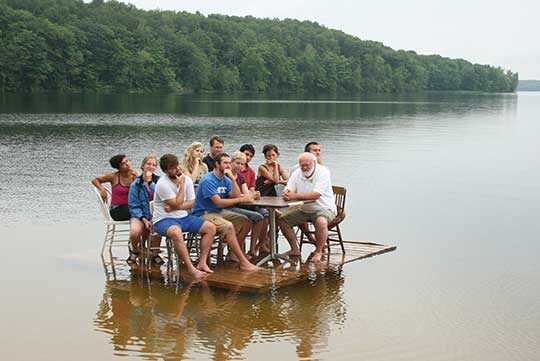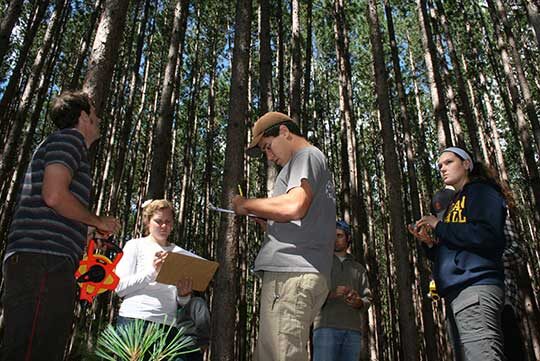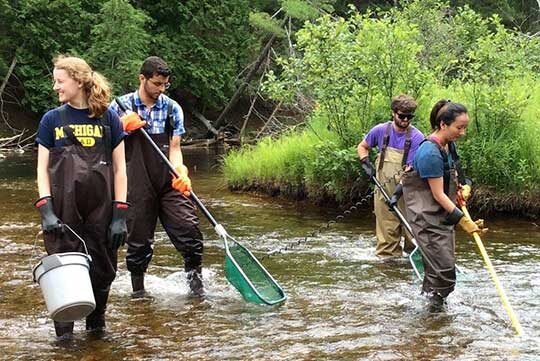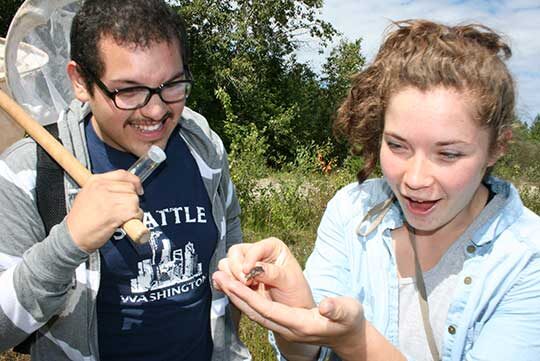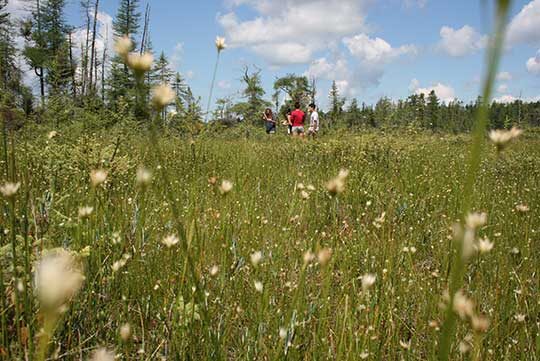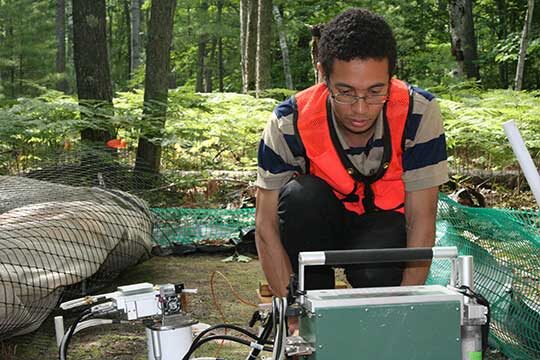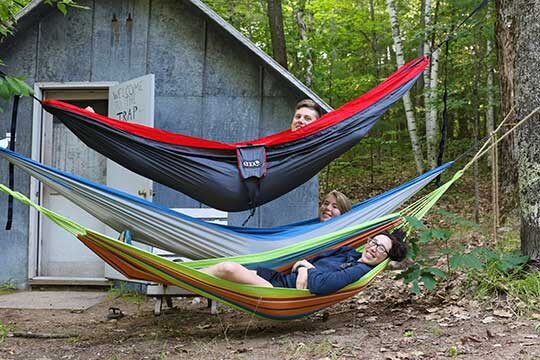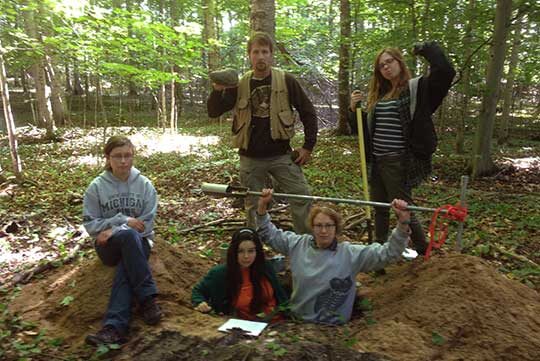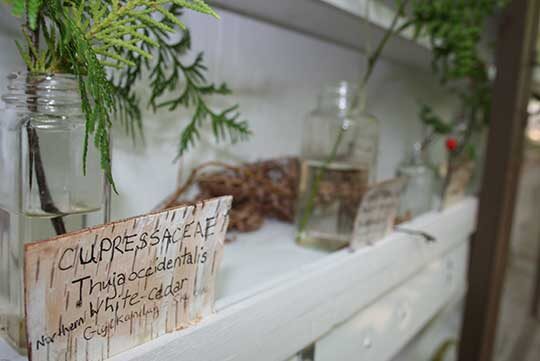Outstanding in the field
It’s hard to imagine a more breathtaking classroom than Michigan’s northern Great Lakes region. The U-M Biological Station (UMBS) immerses students in our state’s natural ecosystems, addressing challenges no lab can replicate. (Text and images provided by UMBS program manager Alicia Farmer.)
-
Aging gracefully
This year marks the 108th field season at the University of Michigan Biological Station (UMBS). Located on Douglas Lake near Pellston, Mich., the station is ideally situated for the study of the upper Great Lakes ecosystems. It hosts more than a dozen classes and welcomes researchers from across North America and around the globe.
-
Evolution revolution
The biological station offers coursework in a four-week spring session and an eight-week summer session. Students take one class in the spring or two classes in the summer. Classes meet for an entire day at a time to accommodate field trips.
-
‘Tis the season
Each summer a cohort of 10 undergraduates do research at the station with funding from the National Science Foundation’s REU (Research Experiences for Undergraduates) program. If selected for this nationally competitive program, students are paired with a mentor to undertake a season-long project.
-
The birds
Ornithology is the longest running course at UMBS, beginning with the biological station’s first summer in 1909. Here, a student holds a black and white warbler as a conservation group nets and counts migrating songbirds.
-
Something’s fishy
Being able to touch, see, smell, and sometimes even taste what they study makes it much easier for most students to understand and remember class material. Field notes get rain-smeared and muddy, but even that connects students to the place where they wrote them.
-
Up close and personal
Small class sizes are the norm at UMBS. Many classes have fewer than 15 students; the largest has 24. This ensures plenty of supervision for student work. Many students find lifelong mentors in their biological station professors.
-
All aboard
UMBS welcomes students from all fields of study. U-M Lecturer Keith Taylor teaches Environmental Writing and Great Lakes Literature (pictured here), which draws science and non-science majors alike.
-
Pining for you
The biological station’s 10,000 acres of property around Douglas Lake include many habitat types. This pine plantation is only a few miles from virgin forest, which escaped the logging boom of the early 20th century.
-
Electrofishing
To survey fish populations in a river, students learn how to electrofish. A battery provides localized current that temporarily stuns fish, which float to the surface for collection and counting. The highlight of 2016: a 27-inch brown trout.
-
Tiny creature, big thrill
Students at the biological station develop a rich sense of community, sharing meals and volleyball games as well as lab benches and field sites. Here, graduate student Sergio Redondo (left) collects insects alongside undergraduate Jayna Sames, who appears delighted with her find.
-
Bouncing bog
Mud Lake Bog is a favorite destination for UMBS students. They can’t resist the bouncy mat of floating sphagnum moss. Bogs are short on nutrients, so they often contain carnivorous plants. This is the place to find insect-eating pitcher plants and sundews.
-
Stormy weather
Weather on and around the Great Lakes is highly variable. This is especially true in the spring semester when students take one of four classes: Biology of Birds, Ethnobotany, General Ecology, or (pictured here) Great Lakes Oceanography.
-
Let’s ride
The biological station welcomes visitors to enjoy non-motorized recreation on its more than 50 miles of trails. Maps are available in the camp store in the summer or online. (Image credit: Rita Morris.)
-
Leafing through
Graduate students throughout North America pursue research at UMBS. Nicholas Medina, now a PhD student in the U-M Department of Ecology and Evolutionary Biology, spent his first summer as a master’s student at the station, studying how decomposing leaves affect soil carbon dioxide levels.
-
Take a load off
Students live in rustic metal cabins that are more than 100 years old. The cabins once housed engineering students who were practicing surveying skills on the then clearcut land. UMBS inherited the cabins when the engineers relocated to Camp Davis in Jackson, Wyo. (Image credit: Rita Morris, pictured, bottom.)
-
Getting to know you
An essential part of understanding any forest is knowing as much as possible about its soils: their types, depth, acidity, or alkalinity, etc. Here, Forest Ecosystems professor John Syring and students show off some of the tools of their trade and the damage they can do.
-
Rolling stones
A standard lab for the General Ecology class is a survey of the invertebrate organisms in the Maple River. Students find life where they never expect it, including the underside of rocks.
-
“Plant TV”
In Ethnobotany, students learn to identify more than 100 species of plants with nutritional, medicinal, or cultural uses for the Great Lakes’ indigenous peoples. Specimens are displayed in outdoor cabinets. When the cabinets’ lights are turned on at night and students sit in front of them studying, it’s easy to see how they earned the nickname “Plant TV.”
-
Wish you were here
The biological station’s lakeside location affords exceptional views of sunsets, the Milky Way, and, occasionally, memorably, the Northern Lights. (Image credit: Mackenzie Myers.)

